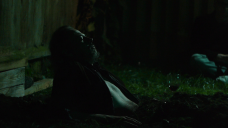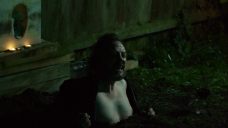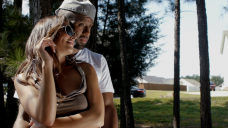
-
@thepalalias - yep, that was filled in the missing pieces for me and hopefully others, too. Thanks for the knowledge.
-
@driftwood Boom looks superb but u r warning clearly says its not for panny lens. I am using panny lenses should I stop using it?? Is there anything available for panny lenses from GOP1 sets???
-
@artiswar: very filmic look on page 15! :)
-
@Stray I forgot to mention - just in case you are using a different card, remember that you reduce the chance of write errors by using a SanDisk 64GB 95MB/s compared to any other card. Good luck!
-
@peternap No I haven't, @Driftwood describes it as experimental so I'm wary of using it for this, and I'm happier with settings that I really know well. There are a lot of performance related variables to this. The performance has a lot of dance sections where the dancers are really going for it. I have good experience of filming dancers, and although we're going to have to do multiple takes I don't want that to be driven that much by any technical issues on our part, tiring out the dancers more than we should. Also we don't want to break the flow of the performance (although obviously we are going to have to shoot it in sections, and move lights around) too much with interruptions (which is also why at least 2 cameras is a must for this). Although Boom may hold up well and be perfectly stable under the conditions we end up shooting in I know other settings that will be more than good enough and have been used by many other people. CM Night is more the likely lowlight specific option for us at the moment for these reasons, and its one we'll be testing this week a lot along with some other settings. If we add Boom to the list to test I just know its going to eat up too much of our time, as the 'experimental' tag it has means we're going to end up overfocussing on it.
At the end of the day, we're zero budget and flying mostly on instinct and previous experience with regards the specific settings to use.
-
@Stray Have you tested Boom? I've been very impressed with it's lowlight performance.
-
@Meierhans Yep indeed as it'll definitely be reshot at a lower GOP (3 or 1), so denoising will produce a good result. Denoising at a much higher ISO tends to get counterproductive though. The look we got from this test shoot is quite close to what we want, however I think we'd be better off capturing something thats about 2 stops brighter than this at a lower ISO and then bring it down later.. but then we'll be losing a lot of the nice lighting. Heh, yeah basically, we need a lighting guy really.
@thepalalias Cheers for the info, will check the PM. The performers are kinda into a green look for this it seems ;)
-
@Stray The things to watch out for with CM Night are the way it handles banding in the event of overexposure and the green levels. It tends to go (slightly) greener than some of the other settings.
I am sending you a PM with a link to a video shot using a combination of cameras (but all the GH2 parts were CM Night).
-
@stray Unless you really want to keep this underexposed look I believe you would get better results with higher Iso and moderate denoise with Neat Video.
-
@thepalalias Yeah, I've not shot with CM Night for quite a while, and my memories of shooting with it raise some concerns (can't remember what the concerns were though, but they related to colour correction in post). I will shoot some test footage with CM Night though as well. Thing is though there is no way we're going to reshoot at that high an ISO unless we absolutely have to. What we do is going to depend on experiments I make in post creating a night look (which will have to involve faking some lights to create the dynamic look we're after). If they go well it would allow us to shoot in much better early evening light. The other option is getting a good lighting guy and some additional lights. If either option plays out then we won't be shooting at mad high ISOs, so hopefully we won't have to reach for CM Night. Its all a bit up in the air still as to how we proceed.
-
@Driftwood Thanks Nick, that's very kind of you. :)
@Stray Why CM Day PM? CM Night is much better optimized for those dark lighting conditions and quadruple digit ISOs.
-
I wounder if the LPowell analysis is the kind they had at Panasonic between codecs before they decided on an intra codec for the GH3. They are the only ones who know how to really improve on what they have created for the GH2. All other efforts have been achieved with great length and much praise, but do we really need to have such pissing matches at this point after so much has been done to get this far. LPowell and Driftwood are relentless at every step and I'd rather see everyone shake hands and try to do something together as a team instead of trying to prove one is better than the other.
-
As we're discussing lowlight sort of.. We did a shoot with two GH2s of a performance in very, very lowlight with AN Nebula soft two days ago. Had to go handheld due to the audience being there and it being an open performance in a back garden. These 4 images (if you don't see 4 click refresh on your browser) are taken straight from the video captured, no correction. All shot at ISO 1000 with an old (soft but not too soft) Helios lens around F2-F3. There is some banding and the noise you'ld expect, however both the banding and the noise is far from as bad as I expected it to be. Which has made me um/ah a bit about the reshoot we're planning without an audience. We'll either shoot in better light (and bring the night in post), or with more lights but as to which settings not so sure as this and other AN test footage has made me rethink a lot of things. Whens the Intravenus seting going to be available @Driftwood ? ;) Other than that we'll reshoot with either Valkyrie, Sedna settings or CM Day PM I think, lots of test shots and experiments to do before we decide.
No, its not a zombie film ;) And there were green gels on the few lights there.

 performance_1.png1280 x 720 - 846K
performance_1.png1280 x 720 - 846K
 performance_2.png1280 x 720 - 735K
performance_2.png1280 x 720 - 735K
 performance_3.png1280 x 720 - 625K
performance_3.png1280 x 720 - 625K
 performance_4.png1280 x 720 - 1M
performance_4.png1280 x 720 - 1M -
@thepalalias During the reign of the GH2 you have consistently given out excellent all round advice for all. I would just like to say a big thanks to you.
-
@Stills Sedna was optimized for 24H in a way that it was not for 24L. It just was not tested very much for that.
But the Sedna matrix does seem to be less demanding than some of the more recent ones, so if that is your main concern, you may be alright. The places the differences would show up would be in high detail and/or low-light or high ISO (which you seem to already anticipate).
-
For efficiency reasons I'm going with Sedna 24L. Not had time to extensively test L so can someone tell me if there is a huge gap between Sedna A 24L and 24H, coz to my eyes they both look great, slight differences in low-light ex tele but not much.
-
@EYESOUL Sure thing. I mean, it partially depends on material and aesthetic. Good-looking actors call for something different than getting the most detail out of distant exteriors, etc. :)
The GH2 has fairly sharp tendencies. You throw a soft lens on and it starts to come back closer to normal. You throw an extra sharp setting on there and it tips it back in the wrong direction (if we are talking flattering depiction of human subjects). If I was shooting human subject, I would use one of the softer ones - even with "soft" glass, unless I was shooting something in a gritty style (a la Traffic or Three Kings, etc.)
@dkingentertainment When you are logged in, go to the posts starting here. http://www.personal-view.com/talks/discussion/comment/81025#Comment_81025
Read the entire description before you download the setting (they are at the bottom of each comment) and try to pick the one that best suits your preferences.
Weigh your emphasis on detail/sharpness vs desire for a flattering look on the actors. Think about how important absolute image quality is vs stability on your shoot, and whether or not you need spanning.
For the most demanding settings, make sure you have SanDisk 64GB 95MB/s card (that exact one, not one like it) if you want to shoot files longer than 4GB in size.
And you can find other author's settings by going to their threads and doing something similar. @bkmwcd @ralph_b and @lpowell are some of the most widely used others recently. @mpgxsvcd Also has some good ones.
If you want to start of with a high image quality GOP1 setting that has proven effective for months on fast cards when used in 24H mode, download Driftwood's Sedna. You can see my earlier posts for more info. (and lots of other people have their own advice and opinions, too). Good luck! :)
@rajamalik Here is another example of an obvious Twixtor artifact that I described (once again, not my footage but it really distracted me). Look for the section starting a little after 00:40, right before the transition into the next clip when things slow down. Notice how much trouble Twixtor has right at the edge of the motion when the direction changes.
-
Im new to this site where are the download links for these patches?? Please Help
-
@thepalalias understood, I was actually debating between the sharp & soft matrix but choose the sharp one because of the manual lenses thinking it would be a good balance..thanks for the insight.
-
@rajamalik Believe me, I have tested the heck out of Twixtor (and other packages that sometimes perform superior in their pixel motion algos with scripts I custom modified). We used them on another music video, but they completely failed on similar test shots we did - not at all good enough in many scenarios. We could only use a minority of the footage we shot - and even that was from 720 50P with a VERY narrow angle shutter. :)
Here is an example (not mine) of how pixel motion software can have mild trouble (and of how Twixtor is sometimes outperformed by competing products).
Pixel motion software requires predictable motion. If you see Twixtor used on for instance birds in flight, you will notice that if both wings are in plain-view (e.g. the bird is facing you head on) that it will typically handle the smooth consistent downward motion of the flaps. It has much greater difficulty with the irregular upward movement, and is especially poor if the object in motion is obstructed.
To get the most out of pixel motion software, you want to start with a relatively high framerate and narrow-angle shutter. Low-framerates and wide-angle shutter can create problems. Try applying the 180 degree rule to the final frame rate (post-processing) that you want to achieve as a starting point. 50P and 60P will work a lot better than 24P or 30P - the increase in quality is not linear.
We also shot some footage with a Scarlet at 120P (would have loved to shoot it on an Epic or FS700 instead) and there are things that look quite different with real extra frames as opposed to Twixtor.
With Twixtor, the pixel difference from frame to frame should not be too great. With real extra frames, you can get some exciting results by having bigger differences.
If there is demanding motion, I can spot pixel-motion treated clips almost instantly. I used it on "Prayer of Light" but it is nowhere to be found on "Listen to the Sound" and I would not change that if given the choice.
I would have loved to do some of the 720 50P at 1080 50P or 60P, though. :)
@EYESOUL Like I said, the differences are subtle. but that does not mean that you would not notice them. :) If I wanted close to that look but slightly more optimized for skin, I would use the "non-sharp" version of that same setting. Maybe Sedna Q20 C would have worked. But like I said, these are subtle differences.
Driftwood's ability to create good settings has been out-stripping my speed in testing them recently, so I have not tested the newest ones thoroughly enough to keep a clear track and give good advice on those newest ones.
But I will say that some of the newest ones (and I apologize for not being sure which off the top of my head) have felt smoother and more cinematic to me.
-
@thepalalias you may be correct..I actually thought the images would be a lot softer with the specific glass I was using far as pore detail,but it's definitely for the MTV crowd ..so what patch would you have recommended?do you think the results would have varied that much with another patch under such a controlled scenario?I mean in the interior shots.The outside shot was with the FD 24mm,the widest manual lens I own so I'm sure that was the culprit of the CA..now that I think about it I actually shot the close up with the Vivitar Series 1 135MM 2.3,a very sharp lens,I actually thought this patch would take the edge off,but for the most part, for the look this video will have I think Cluster 7 did a great job.
-
@thepalalias try twixtor plugin don't shoot in 720p for slow motion. i tested twixtor & native fcpx retime options. with twixtor u can push it so hard upto 10% speed. but Retime would only perform well upto 4 times slower 25% speed. below 20% speed is not advisable in apple retime. 120fps possible with retime. 240 fps or even more with constant keyframe in twixtor.
-
@EYESOUL Sharp pore detail (not saying relative from one setting to another, just in general). Looks like there might be some CA on the tree by the sky in third image. Either way, the bokeh is not as pleasing as the others but the video does seem to be an effective realization of the MTV aesthetic, so I can see why you would be happy.
Personally, that is not a shoot I would have used Sharp2 on. I think some of the other recent Driftwood settings would have subtly enhanced the beauty of the models more.
@vicx Data is good - PNG files are also good. And it helps to compare I-frames to I-frames, etc. :)
Anyway, I agree: reading about demanding tests is some of the most interesting. If you can show a PNG of how an older setting failed and one of how the new setting succeeds (under controlled conditions shot within minutes of each other, not hours or days) then you really get my attention.
@RyanPW I really like the way the GOP1 settings handle grain patterns from frame to frame. We saw a big step forward in that area around the time Sedna was released as well as in detail. Mysteron helped make 720P modes perform more consistently than before. CM Night really made a difference in terms of things like edge definition in worst-case scenario high-ISO lowlight conditions. The new settings are giving some very cool options - and that is the keyword, "options". It is helpful for people to know what sort of choices they are making when they load a setting.
If I need very, very long record times and tiny files, I rely on Sanity 5. If I want a step-up in video quality that still works with a wide range of cards and modes, I use FM2.02 (which spans on most cards I have). If I am shooting 24H aiming for maximum quality and either am less concerned about spanning or using a SanDisk 64GB 95MB/s, I use a Driftwood GOP1 setting. I find my favorite ones can deliver the detail level I desire and I like the GOP1 look to grain and shadow movement and having a more consistent response between static shots and high movement.
As far as GOP1 settings - there are a lot of really interesting ones either recently released or currently being tested and the key to getting them to the point where a wide portion of the community can make good use of them will be careful testing and good information.
When I look back at a recent music video where I shot all the GH2 parts in CM Night, my main issue is not resolution (which I was generally happy with in both 720P and 1080P) but banding. Some of the 720P shots that were heavily over-exposed (intentionally) had some noticeable banding issues. That is one of the reasons why the current testing is of great interest to me.
If you are shooting low-to-moderate detail in daylight and are not grading heavily, there is rarely much to differentiate the settings. I have seen this over and over. But when you start to stress them (detail or ISO or shadows or banding, etc.) you start to really be able to see more of a difference.
I am not knocking the low-GOP settings that are not GOP1. Lots of people are doing great things with them. But for my personal aesthetic, GOP1 has been more pleasing so far and I like to use it when I can. They are my first choice for 24H shooting image quality. FM 2.02 is my first choice for "needs to work with whatever I do and I do not know what that will be or how long I will be shooting or which card I can shoot on" sort of flexibility. Sanity is my "I don't have time to transcode and the client needs the files transferred tonight" setting.
Does that help any?
-
Decided to shoot a music video with AN Cluster 7 Nebula Sharp2.The images look great! to my eye, they have not been color corrected or graded really, just adjusted the curves a little to add some character to the look..I like these setting a lot..shot with a old Nikon 50mm 1.8 E-series & FD 24mm 2.8,Smooth all -2,24pH,ISO-160-640..I just hope my edit can be as good as the images lol @Driftwood amazing patch!

 PV 1.png1920 x 1080 - 2M
PV 1.png1920 x 1080 - 2M
 PV 2.png1920 x 1080 - 2M
PV 2.png1920 x 1080 - 2M
 PV 4.png1920 x 1080 - 3M
PV 4.png1920 x 1080 - 3M
 PV 3.png1920 x 1080 - 2M
PV 3.png1920 x 1080 - 2M -
Steady on - I feel uneasy reading some of these threads where people make some pretty wild claims.
Am I wrong? When I first read about 444 matrix settings I thought is this about halving the luma resolution? If that's what it is then maybe reducing the resolution isn't a bad thing for some subject matter but that doesn't make it perfect for every kind of subject. And now Flat 4 - I need to know how this works technically.
These threads shouldn't be about cheerleading. They should be about sharing accurate (hopefully technical) information on what does and doesn't work with a new patch.
Sure I don't mind reading another glowing 'yay works for me' post even when the subject matter so clearly falls into a range where using the most wacked out patch would probably work and even the default GH2 firmware would kill it; because at least they are short comments.
However I am just as happy to read about what doesn't work with a patch. Am I wrong?
Anyway keep posting people, and just for me please post the JM-SP decoder screenshot in addition to your reference image. It is in Streamparser under "Tools". You have to "Create Video/Audo Elementary Stream Files" first and then you can "Decode Video Elementary Stream File" to get the output. Yay data!
Howdy, Stranger!
It looks like you're new here. If you want to get involved, click one of these buttons!
Categories
- Topics List23,991
- Blog5,725
- General and News1,354
- Hacks and Patches1,153
- ↳ Top Settings33
- ↳ Beginners256
- ↳ Archives402
- ↳ Hacks News and Development56
- Cameras2,367
- ↳ Panasonic995
- ↳ Canon118
- ↳ Sony156
- ↳ Nikon96
- ↳ Pentax and Samsung70
- ↳ Olympus and Fujifilm101
- ↳ Compacts and Camcorders300
- ↳ Smartphones for video97
- ↳ Pro Video Cameras191
- ↳ BlackMagic and other raw cameras116
- Skill1,960
- ↳ Business and distribution66
- ↳ Preparation, scripts and legal38
- ↳ Art149
- ↳ Import, Convert, Exporting291
- ↳ Editors191
- ↳ Effects and stunts115
- ↳ Color grading197
- ↳ Sound and Music280
- ↳ Lighting96
- ↳ Software and storage tips266
- Gear5,420
- ↳ Filters, Adapters, Matte boxes344
- ↳ Lenses1,582
- ↳ Follow focus and gears93
- ↳ Sound499
- ↳ Lighting gear314
- ↳ Camera movement230
- ↳ Gimbals and copters302
- ↳ Rigs and related stuff273
- ↳ Power solutions83
- ↳ Monitors and viewfinders340
- ↳ Tripods and fluid heads139
- ↳ Storage286
- ↳ Computers and studio gear560
- ↳ VR and 3D248
- Showcase1,859
- Marketplace2,834
- Offtopic1,319










